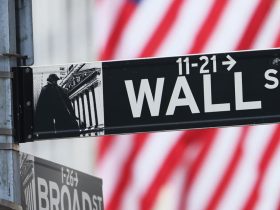Investors are navigating a transitional time, with questions that defy easy answers. Everything seems to be happening at once, and yet nothing seems to have definitively changed.
Central Intelligence Agency Director William Burns has described our time as “one of those rare plastic moments of genuine transformation that come along once or twice a century, similar in its sweep to the moment after World War II.”
To apply Burns’ use of an engineering concept that describes the breaking point of a structure to investing, we note that markets seem to have developed an unusual tendency toward volatility.
The market’s erratic pattern—characterized by bursts of event-driven trading driven by the market mob—has investors jumping from one flashpoint to another.
Chief among the major questions is why the bond and stock markets are at odds over America’s economic future. Stock trading generally anticipates an economic soft landing, but is that scenario sustainable with contracting corporate earnings? Will the Federal Reserve’s interest rate hikes ultimately spark a recession or will economic growth slow without derailing the economy? And will these questions become irrelevant if artificial intelligence renders everything, and everyone, obsolete?
Bond yields are attractive and may prove irresistible to investors nearing, or in, retirement, after decades of successive financial crises. Will grayheads flee stocks for reliable bond returns?
What happens to America’s debt rating, tax rates, and obscene debt levels if Congress fails to fund the government and forces an October shutdown?
What happens to markets, and geopolitical stability, if China is sucked into an economic doom loop of its own creation? Would China invade Taiwan to regain mastery of the domestic political narrative?
Will Russia start World War III as Western powers increasingly arm Ukraine? Some military strategists think Russia might use tactical nuclear weapons to establish mastery of the situation.
Questions like these make it hard to have conviction about establishing new stock positions when the market trades at historically elevated valuations.
Playing options volatility is one alternative to buying stocks. The
Cboe Volatility Index,
or VIX, is below its long-term average of about 19. The options market is increasingly awash with hedging activity in anticipation that volatility could increase and stocks could decline.
One emblematic recent trade entailed the purchase of 127,000 VIX December $25 call options and the sale of the same number of December $32 calls in anticipation of lower stock prices by year’s end. The strategy may or may not be the right approach, but most investors would do better by devising a list of stocks they want to buy, or own more of, if options volatility surges and stocks sink, rather than trading VIX derivatives.
Conversely, options-centric investors could consider selling put options on blue-chip stocks with strike prices 5% to 10% below the market price with expirations under two months. (Calls give holders the right to purchase an asset at a set price within a defined period, while puts give holders the right to sell an asset within similar parameters.)
This approach allows an investor to monetize the fear of others. The more extreme the fear, the better—provided, of course, that markets remain elastic and never hit a permanent breaking point.
Steven M. Sears is the president and chief operating officer of Options Solutions, a specialized asset-management firm. Neither he nor the firm has a position in the options or underlying securities mentioned in this column.
Email: [email protected]
Read the full article here













Leave a Reply